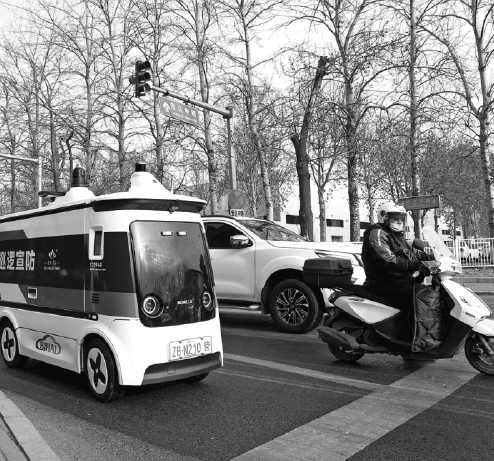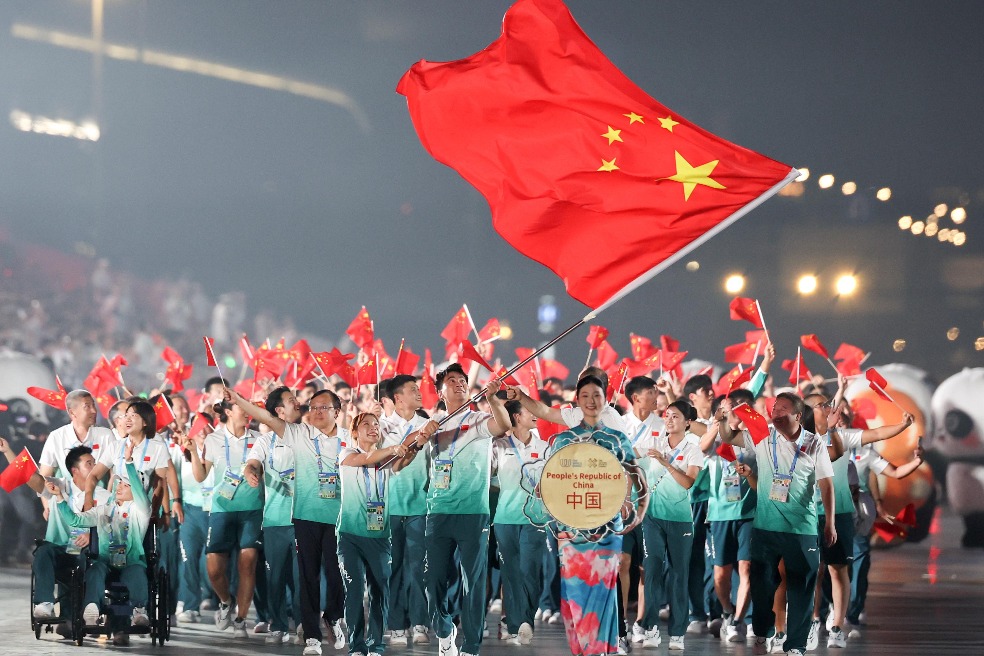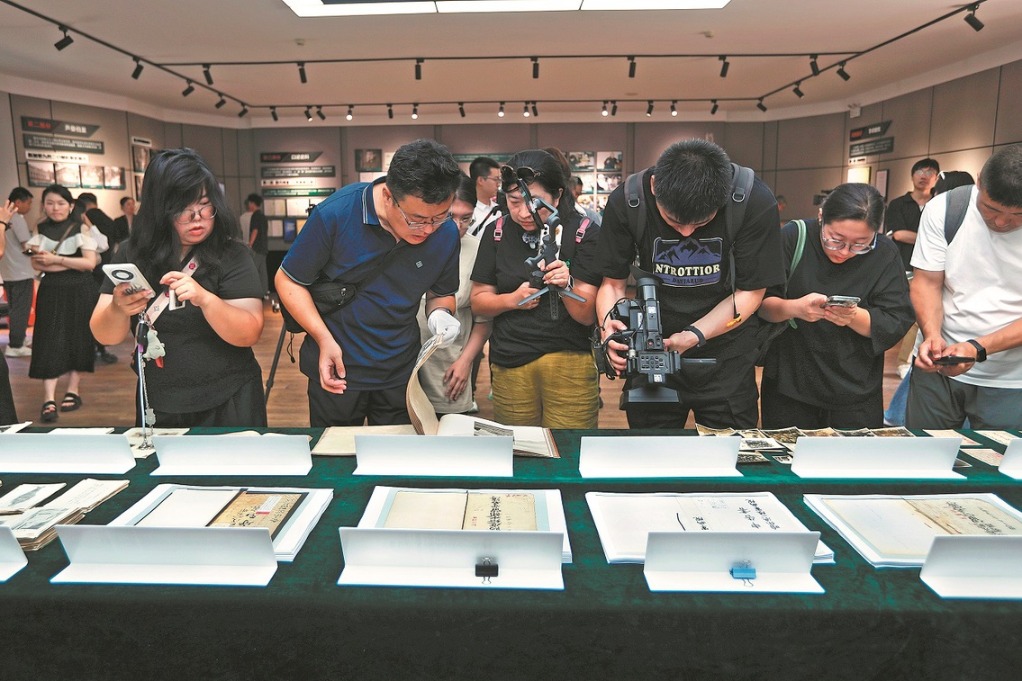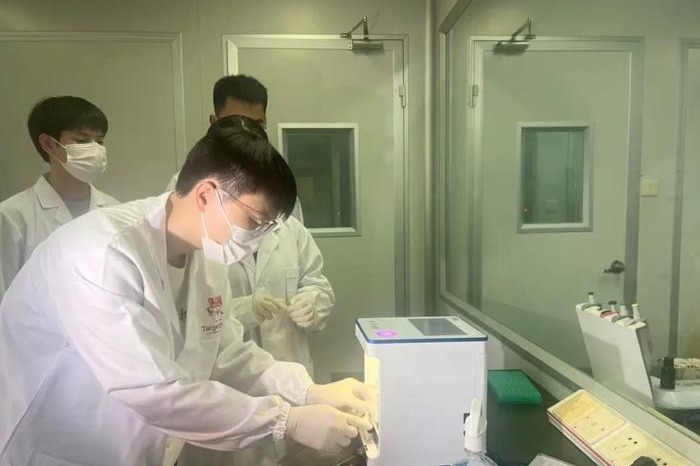Self-driving police patrol vehicles tested on public roads in capital

The office of the Beijing high-level autonomous driving demonstration area launched a road test of unmanned police patrol vehicles on Tuesday, the first of its kind in China.
Fifteen self-driving patrol vehicles, complete with flashing lights, hit public roads in the autonomous driving demonstration area, performing round-the-clock police duties in coordination with officers from the Daxing branch of the Beijing Public Security Bureau.
The duties being tested include patrolling, ensuring security for large-scale events, public announcements, issuing warnings and emergency rescue work.
"The unmanned patrol vehicles possess Level 4 autonomous driving technology. They can complete battery replacement in 30 seconds and have a driving range of 100 kilometers," said Zhang Weiling, senior vice-president of Neolix, developer of the patrol vehicles.
The vehicles feature a 360-degree multi-sensor fusion perception capability with a detection range of up to 120 meters. The powerful onboard computing platform can calculate and respond based on road conditions in real time, thus ensuring vehicle driving safety.
The unmanned vehicle team will patrol an area of 60 square km in the Beijing high-level autonomous driving demonstration area.
Since Beijing initiated the autonomous driving demonstration area in September 2020, it has built 160 sq km of intelligent connected roads and a dedicated smart city network.
A total of 28 vehicle testing companies are operating in the demonstration area. Over 800 vehicles are engaged in testing and commercial exploration, with a cumulative test mileage exceeding 20 million km.
Xinhua

Today's Top News
- Chengdu World Games concludes amid wide acclaim
- Trump, Putin say talks 'constructive'
- China, India to start new round of consultations
- Healthy China-India relations good for regional development and stability
- China achieves best performance at The World Games in Chengdu
- Books of Xi's discourses on adhering to deepening reform comprehensively published






























